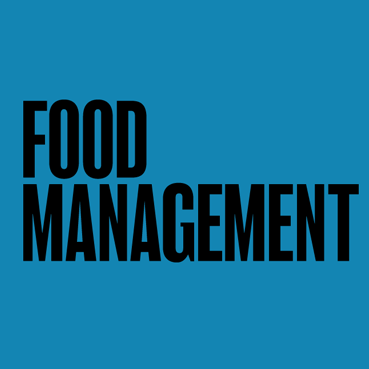Cracking the Blue CrabCracking the Blue Crab
April 1, 2003
FM Staff
THE BLUE CRAB is at home on many menus—but its more select grade of meat is particularly suited to elegant appetizers and upscale entrees at catered events. |
When it comes to seafood, nothing beats the delicate, sweet succulence of the versatile blue crab (Callinectes sapidus). Admittedly, this writer is biased, having grown up on a steady diet of hard and soft shell crabs on the shores of Maryland's Chesapeake Bay.
But for noncommercial operators, blue crab has many applications, depending on needs and budget (see list of grades below). A formal function might call for plump and savory crab cakes using the more costly, premium back fin or lump meat, while a casual menu could feature the value-priced claw meat in soups, quesadillas or salads.
Blue crabs are found in brackish estuaries and bays from Cape Cod to the Gulf of Mexico. Blue tinges on dark shells and blue patches on the legs give the crab its name. The largest concentration is in Chesapeake and Delaware Bays off Maryland and Virginia. Due to depleted populations, a very close species to the blue, the blue swimming crab, is increasingly being imported from Southeast Asia.
Blue crab meat has a rich, sweet, buttery flavor. The body meat is delicately flavored, while claw meat is nutty. Live crabs can be steamed or boiled and eaten immediately or used in sauces or salads.
Grades of crab meat
Colossal and jumbo lump are perceived as the "Rolls Royces" and "Bentleys" of crab meat, though they are the most commonly misused grades of crabmeat. While the lumps are large and the meat is white, colossal and jumbo lump are best used in upscale cocktail presentations or in sautes. Colossal consists of the extra large lumps of unbroken meat, while jumbo lump consists of the two largest muscles from the swimming fins of the crab.
Many users have the impression that the flavor of colossal and jumbo lump is better than other grades of crab meat. This is not necessarily true. The size of the lump is the only thing that really distinguishes these grades from other white meat grades. If a chef breaks up the lumps for a recipe, he could easily use another grade of meat.
Backfin meat is ideal for upscale operations that feature crab dishes. Backfin is a blend of broken pieces of lump and special grade crab meat. It is perfect for crab cakes, sautes, crab toppings or cold salads. Backfin makes a beautiful presentation when stuffing fish, chicken, vegetables or seafood.
Special grade crab meat is often the most versatile grade for most recipes and quite profitable. It consists of the smaller flakes of white meat from the body of the crab—perfect for crab cakes, salads, quesadillas, wraps, stuffed mushroom caps and crab balls. It is individual pieces from the body cavities of the crab, but it carries the same bright white color and flavor as backfin and jumbo lump with an appropriate price tag for casual dining or quick service.
Claw meat is from the swimming fins of the crab. It is brown meat with a stronger flavor profile which makes claw meat ideal for dishes with heavy sauces or in dips and soups. It is also ideal for price sensitive menu items. Crab cakes can be made with claw meat. Try a Thai crabmeat salad, a crab fritter, or crab spring rolls.
Claw fingers are not a grade of crab meat. They are the pinchers or tips of the claws and they make unique hors d'oeuvres or garnishes. Wrap a claw finger with a crab stuffing mixture or serve them in a cocktail dish. They, too, are an inexpensive way to add crab meat to menus.
Crab meat is available fresh, frozen or pasteurized.
With pasteurization, fresh crabs are cooked and then allowed to cool. The meat is then hand-picked, graded and placed in cans, then hermetically sealed and pasteurized. Pasteurization destroys natural pathogenic microorganisms to extend shelf life without adding artificial preservatives. Once pasteurized, the product has a shelf life of 12 months in cans or refrigerated in plastic containers.

About the Author
You May Also Like




.jpg?width=300&auto=webp&quality=80&disable=upscale)

